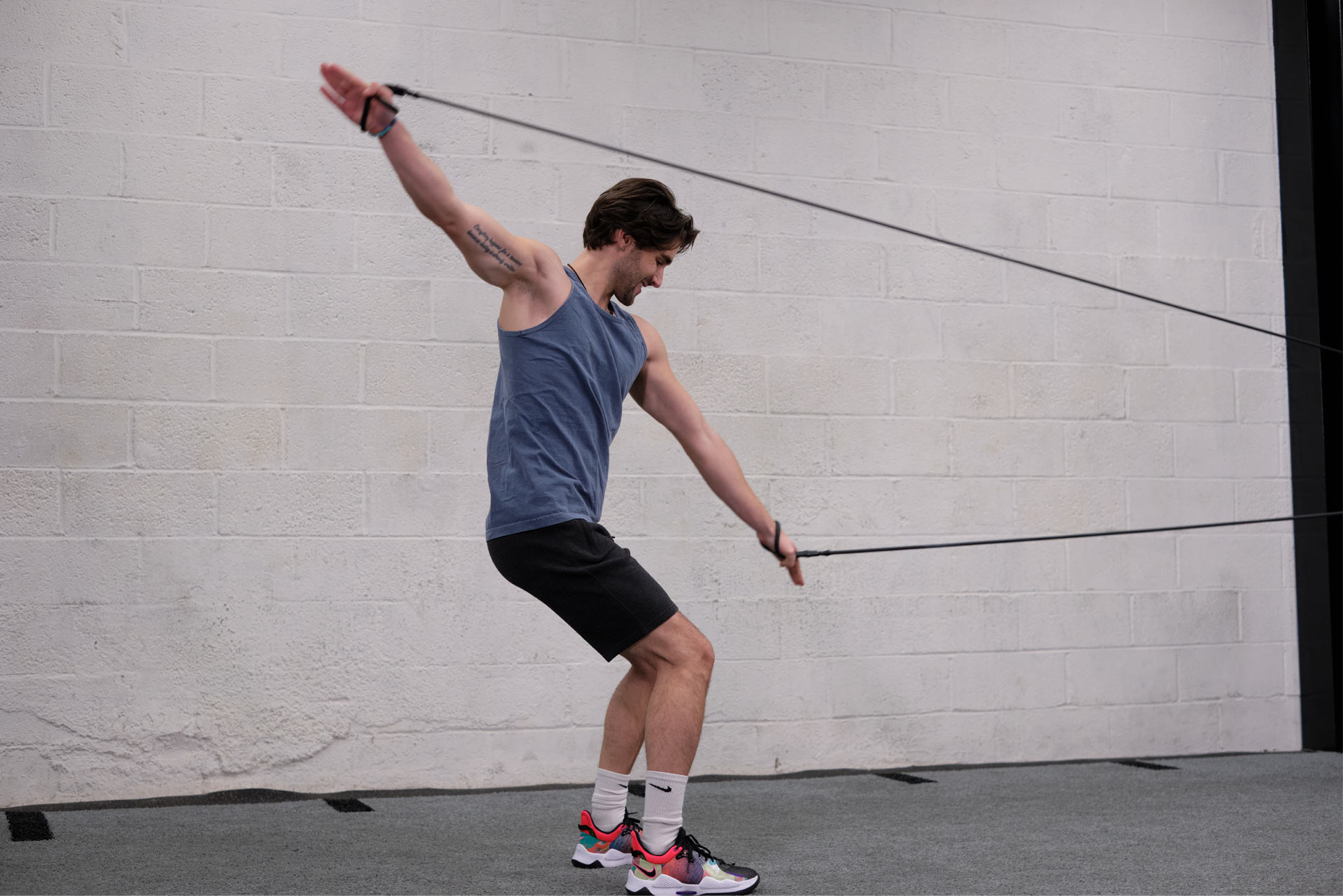A Better Way to Train (or, A Gym Inside a Backpack)
When his children wanted to wrestle, former college wrestler Andrew Hunter enrolled them at Willpower Wrestling Club out of Brooklyn. Founded by Damir Zakhartdinov, a three-time Olympian from the former Soviet Union, the club used training techniques developed over decades of Soviet domination in the sport of wrestling. Andrew quickly became a volunteer coach, his passion for the sport guiding him to partner with Demir to lead dozens of children on their wrestling journey.
One of their signature training methods involved using incredibly long resistance bands. Rather than the short bands most Americans used, the Soviet-style bands relied on their 16-foot length to create a variety of dynamic exercises for everything from strength training to speed development. These methods were integral to the style of training Andrew and Damir wanted for their athletes.
Andrew and Damir brainstormed ways to make the bands even more versatile, adding safety features and other systems. They made custom bands in Andrew’s kitchen and brought them to the gym for the wrestlers to train with.
But when COVID hit, the gym had to shut down. With hundreds of athletes to train, Andrew and Damir took their training and bands to the park.
Not Just for Wrestling
After watching their workouts, curious strangers in the park offered to buy the very bands they were using. Andrew took orders and made each band by hand in his kitchen, investing profits back into the wrestling club to support passionate athletes who couldn’t afford the fees. He called his company Willpower Resistance Bands, a nod to the wrestling club that started it all.
The brand began user testing, with clients from trainers and physical therapists to Olympic-caliber athletes offering feedback. Before long, Andrew couldn’t keep up with the production demand from his kitchen anymore. He needed to scale quickly, and that’s when he reached out to Gembah.
Design Challenges
Though Andrew had experience with digital product development, physical product development was an entirely new world. Willpower Bands have to be created by hand with high-quality latex material, and the production process needed to be repeatable and flawless to ensure safety and quality for their customers.
The product had to be redesigned for manufacturing, so Gembah engineers started from scratch to develop a product and production process with these specifications in mind. Hand making each product also required working with a unique factory with the resources available to meet production demands.
Solution
After engineers designed the new product and developed the repeatable production process, Gembah found a region and a manufacturer that could source the highest-quality latex on the market. Next, Gembah worked to find a factory capable of handling the materials to create a product that would be safe, versatile, and durable enough for use in gyms, homes, and physical therapy offices. Making them by machine wasn’t an option, so Gembah located a factory able to hand make each band.
Designing the process and sourcing the materials weren’t the only challenge faced by Gembah and Willpower Bands. Safety is of the utmost importance to Willpower, and bands needed to undergo extensive testing to ensure they would never snap during use. Reducing the risk of injury lets athletes focus on their training and performance instead of worrying about getting hurt, guaranteeing a better experience for every user. Dozens of prototypes were tested before the manufacturers were finally satisfied.
Result
After design, material sourcing, and product testing, Willpower Bands are ready to begin production. They are in the pre-launch phase, using a marketing campaign centered on videos of exercises and demonstrating all the ways athletes can use their product to build performance. Demand has already begun from gyms and trainers interested in trying the bands for themselves, and the first bands should be in customer’s hands by May of 2022.
“The Gembah team believed in the product, they believed in the mission. From Covid and supply chain disruption, everything you could imagine could go wrong went wrong. But we worked together through it, and we’re still nearing the finish line. I can’t say enough about the diligence of the Gembah team and bringing it home.”
Topics: Product Design, Product Development
